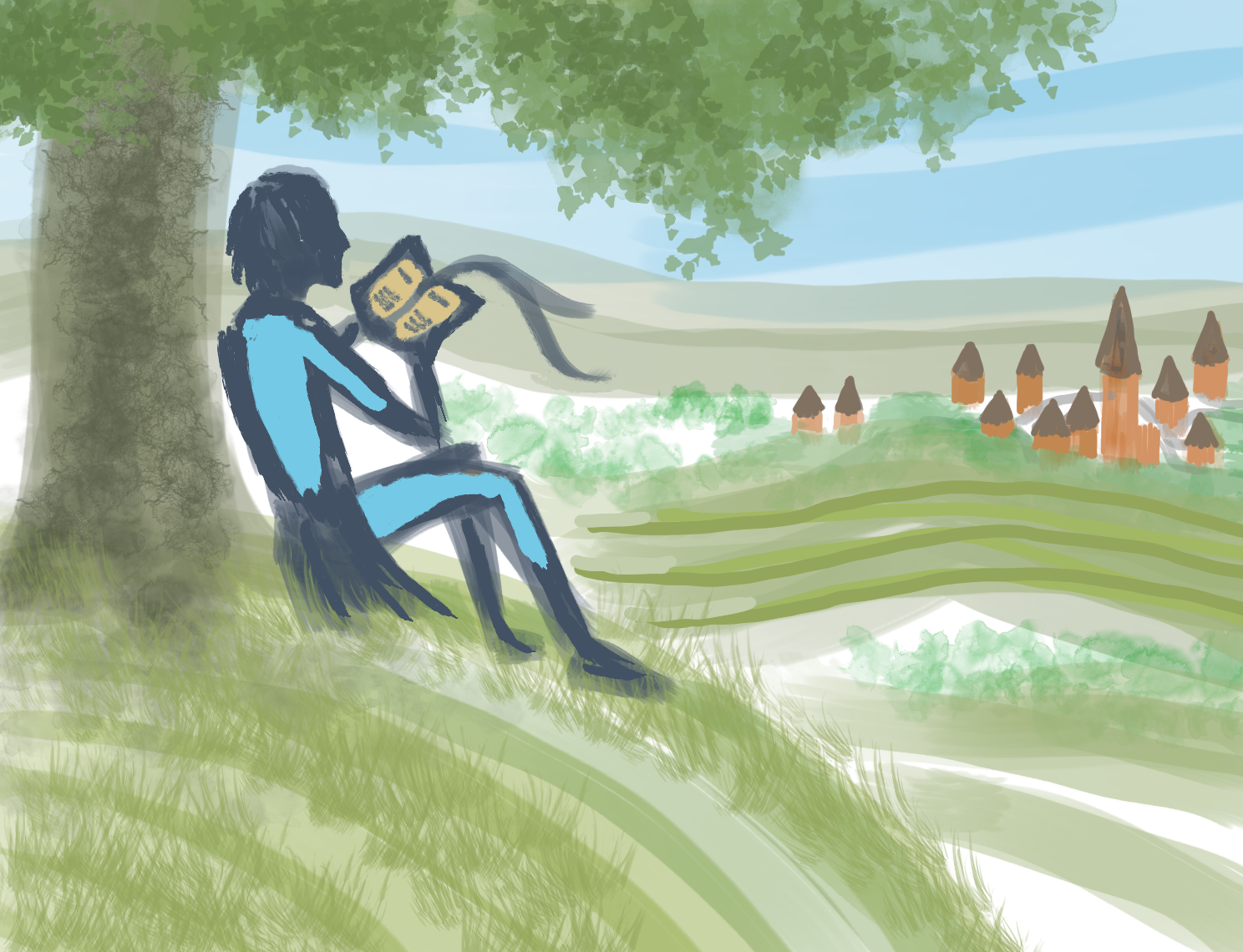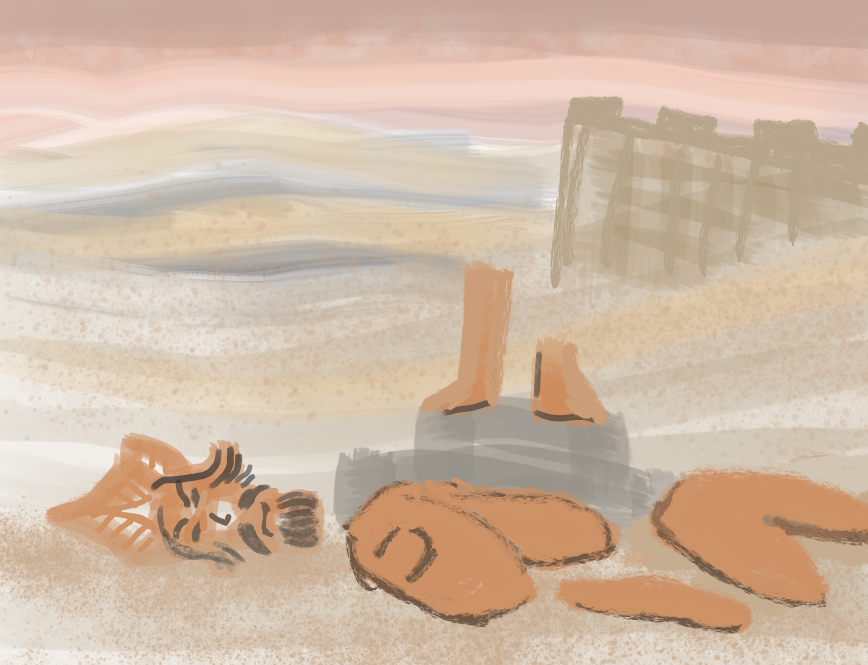
A Writing on Poetry, A Deeper Read of a Poem …
Verses & stanzas of artistic writing, bottling beautiful mystical experience. In better case, of visions toward meaningful depths, and the beyond.
Good day, Fine Person ...
I present a reminder and thoughts on poetry. There were times in my life I read poetry from books, or from here and there.
Now there is access to poetry through internet. However, it is getting difficult to tell apart AI generated poetry words, from what a person wrote from their own mind and understanding.
Most people don’t seem to notice poetry that much. It is a part of literature. When a poem is good, it can help us feel good, enjoy, be enlightened.
In this article we will look at two poems. We will learn how to read a poem, seeing some deeper meanings.
Hey, listen…
Dear reader, read the article, give me good feedback. Support me and this work, visit the Support-HHH page. Consider joining the email-list. Visit the shop and browse items.
A Brief Glance at a Poem.
Taking a brief glance at a poem, we see a heading, perhaps an author’s name, and a body of text. The text is usually arranged vertically, and the lines often don’t take the whole width of the page.
Usually the text of a paragraph moves across the page; however, a poem’s lines are shorter statements or fragments of statements.
Those statements and fragments are chosen artfully and with reason, and the whole body of text follows in sequences, parts of imagery and stating of things.
The lines may be grouped into parts or stanzas, or may follow on together for a long time. The whole poetic work may be one whole, or be split to major labeled sections.
Reading the lines, we get a first idea of the expression the poet is making.
Two Examples From Good Poems…
The Tyger
by William Blake
Tyger Tyger, burning bright,
In the forests of the night;
What immortal hand or eye,
Could frame thy fearful symmetry?
In what distant deeps or skies.
Burnt the fire of thine eyes?
On what wings dare he aspire?
What the hand, dare seize the fire?
And what shoulder, & what art,
Could twist the sinews of thy heart?
And when thy heart began to beat,
What dread hand? & what dread feet?
What the hammer? what the chain,
In what furnace was thy brain?
What the anvil? what dread grasp,
Dare its deadly terrors clasp!
When the stars threw down their spears
And water’d heaven with their tears:
Did he smile his work to see?
Did he who made the Lamb make thee?
Tyger Tyger burning bright,
In the forests of the night:
What immortal hand or eye,
Dare frame thy fearful symmetry?
Ozymandias
by Percy Bysshe Shelley
I met a traveller from an antique land,
Who said, “Two vast and trunkless legs of stone
Stand in the desert. Near them, on the sand,
Half sunk, a shattered visage lies, whose frown,
And wrinkled lip, and sneer of cold command,
Tell that its sculptor well those passions read
Which yet survive, stamped on these lifeless things,
The hand that mocked them, and the heart that fed;
And on the pedestal these words appear:
‘My name is Ozymandias, king of kings:
Look on my works, ye Mighty, and despair!’
Nothing beside remains. Round the decay
Of that Colossal Wreck, boundless and bare,
The lone and level sands stretch far away.”
How to Read a Poem, a Deeper Look.
We will take the Ozymandias poem.
- We have to read the poem in whole. Go with the flow of sentences, taking pauses where you have to pause. Also as you read, take in the meaning of words.
- It starts with the speaker getting information from a traveller who was at a dessert.
- First it is about the broken remains of a statue. It talks about the remaining expression of perhaps arrogance on the face of the statue. We read a statement placed by the bygone king.
- Then it shows that there is now nothing else left of the reign of that king; things have changed and moved on with distant time. It provides the imagery of the landscape beyond, of a lonely desert of sand.
- The broken statue may bring curiosity. Of who the person was. Why he was expressing words in that way. Themes of flaws of the old-time powerful rulers / kings / emperors are suggested.
- It suggests that the shown ruler had an ego, perhaps some arrogance. The reader may speculate that perhaps the ruler might have misused his power in his time.

The Surroundings
- We do not know what happened in the past. But the comparison of the statement of the king, to the way things are now, suggest something :
- That the king would have been unaware of how things would be far into the future, or perhaps he did not consider much these future realities in the time of his ruling. Or that he had an idea of the far future, but did not care much of it over his present time.
- We are finally given a view of the surroundings of the place. The lonely quiet desert and the stretching sands suggest themes of time, change, shifting, entropy, moving on of state, and the endings of some human civilizations, and ambitions.
- Furthermore, it may suggest that we ourselves might consider to be less prideful, more humble and wise. Less grasping or attached for brief present material gains or trivial delusions.
- To consider that power that we think we have, may not matter or last in the further view of things.
Some Parts of This Work :
- A traveller in far and antique lands. Travel. Rumour.
- Ruins and statues in the sandy desert.
- Thoughts, feelings, deeds, expressions of historical and past rulers.
- Pride. The status of kings. The limited power and variable judgement of kings, emperors and monarchs.
- Mortals, individuals. A mortal that is a king. Attitudes or deeds of hubris.
- Time, distance, change, decay.
- The far past, the present and the far future.
- Bygone history to a modern person’s context and interest.
- What the author is trying to tell us.
Some Ideas for Philosophy :
- How a mortal person should rule. How to treat the people we rule.
- Equality, good status to lower classes,
- Caste. class systems purposefully restrained or limited, peoples' basic rights (for basic wellbeing of all people).
- Our perspective and view on present, our understanding of future to come.
- Our awareness of the past, and what is important to know in history.
- Our place in the world, if we will keep that place, and for how long.
- What are worthy goals for people of power.
Some Elements for Considering in Meditation & Imagination :
- Royal palace ruins, An old crumbling statue of a king,
- Prideful ruler king, Mortal ruler king, flawed ruler king
- Good rule / leadership, bad rule / leadership
- The sandy lonely dessert
- Travellers in far antique lands, distant lands, exotic lands
- March of time
- Civilization’s fall
- Romantic past, realistic past
Themes for the Heart
- Time, past, distance, nostalgia, woder, yearning
- Ruin, loss, change, death, moving on world
- Romantisism
- Fall of kings, emperors
- Fall of civilization
- Travel, Travel distance, home
- Cautionary, consideration, personal reflection
For Further Exploration
- King and palace → city, roads, towns, villages, nation people
- King and palace → Armies
- King and palace → Other nations, allies, relations, inner outer enemies, conspirators, spies
- Kings and palace → Power, Good deeds and tending to the nation, people, justic, law
- Kings and palace → Power, bad deeds, punishment, injustice, people, criminals, opponents
- Desert → natural land, past land, oasis, rivers, desert creatures
- Desert → remnants of past civilization, surviving people, stories, songs, practices and customs
- Ruins → Distant future tourism, Ruins turn to natural landscape
For Remembering and Contemplating
- Desert → travel memories, comparison to own known lands
- Statue → remembering politics and rulers of own lands, comparison, own behavior and attitudes
- Travel → Remembering own ideas of travel and thoughts, plans, what would like to see
- Time/Change → Remembering changes of own life, the past, present and future, views on own death to come
Collective Synoptic Reading
E.g- Comparisons and together-study of other poems such as :
- Kubla Khan (samuel taylor coleridge)
- Ulysses (Alfred, Lord Tennyson)
- Sonnet 55 (William Shakespeare)
So, that’s it...
We studied the poem Ozymandias in this article. As you see, there are a number of ways in which we can approach it. You can take this as one example of reading poetry.
Be sure to also read the other articles in this set of writings about poetry, when they are published.
Hey, listen…
Dear reader, give me good feedback. Support me and this work (visit the Support-HHH page). Patreon is a good option. Or consider joining the email-list. Visit the shop and browse items.
Read more of my published articles / browse my other content - social media (esp Youtube).